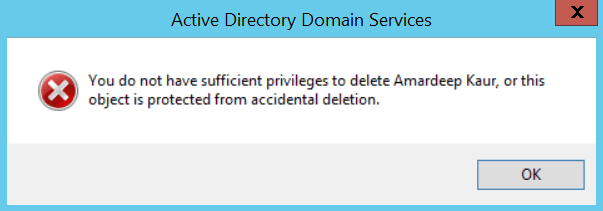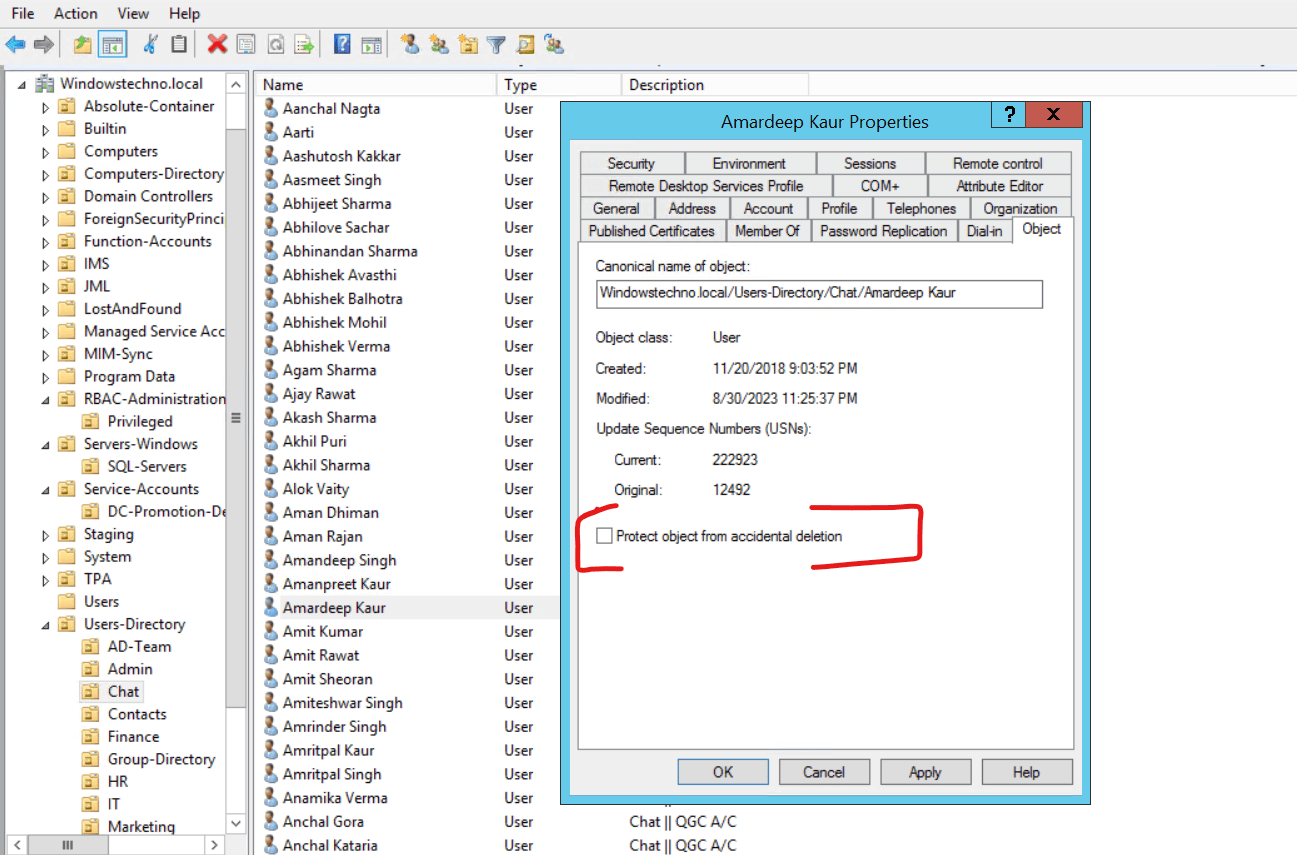Object protected by accidental deletion
In Active Directory (AD), the “Protect object from accidental deletion” feature is a safeguard that can be applied to objects within the directory to prevent them from being easily deleted. When this protection is enabled for an object, it adds an extra layer of security to help prevent accidental or unintentional deletions.
When an object has the “Protect object from accidental deletion” option enabled, it requires additional steps and permissions to delete the object. By default, this protection is applied to certain critical objects, such as domain controllers, organizational units (OUs), and other important AD components.
Enabling this protection helps prevent accidental deletion of critical objects that could have significant impacts on the AD infrastructure and the associated services and systems. It provides an extra level of confirmation and accountability, ensuring that only authorized administrators with the appropriate permissions can delete protected objects.
To delete an object that is protected by accidental deletion, an administrator must first disable the protection for that specific object. Once the protection is disabled, the object can be deleted like any other object in AD. This additional step helps prevent accidental deletions by requiring a deliberate action to disable the protection before deleting the object.
It’s worth noting that enabling the “Protect object from accidental deletion” feature is not a foolproof solution, and it should be used in conjunction with other backup and recovery mechanisms to ensure the integrity and availability of critical AD objects.
How to delete object protected by accidental deletion
- Run dsa.msc
- Click on View then click on Advanced features
- Navigate to OU where object is there that need to be deleted.
- Select Object tab
- Uncheck the option Protect object from accidental deletion
- Delete the Object
So, that’s all in this blog. I will meet you soon with next stuff. Have a nice day!!!
Guys please don’t forget to like and share the post. Also join our WindowsTechno Community and where you can post your queries/doubts and our experts will address them.
You can also share the feedback on below windows techno email id.
If you have any questions, feel free to contact us onadmin@windowstechno.com also follow us on facebook@windowstechno to get updates about new blog posts.


